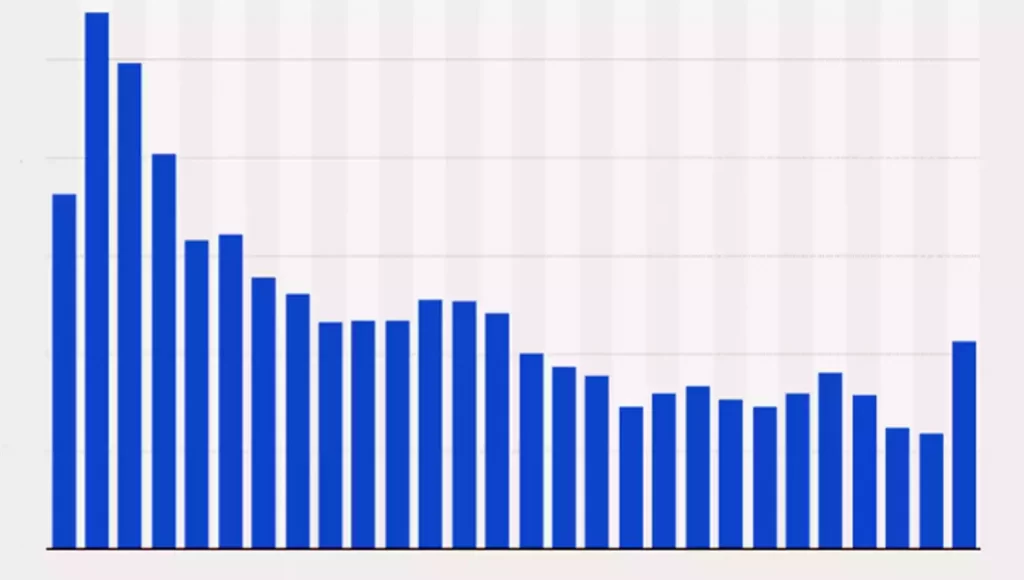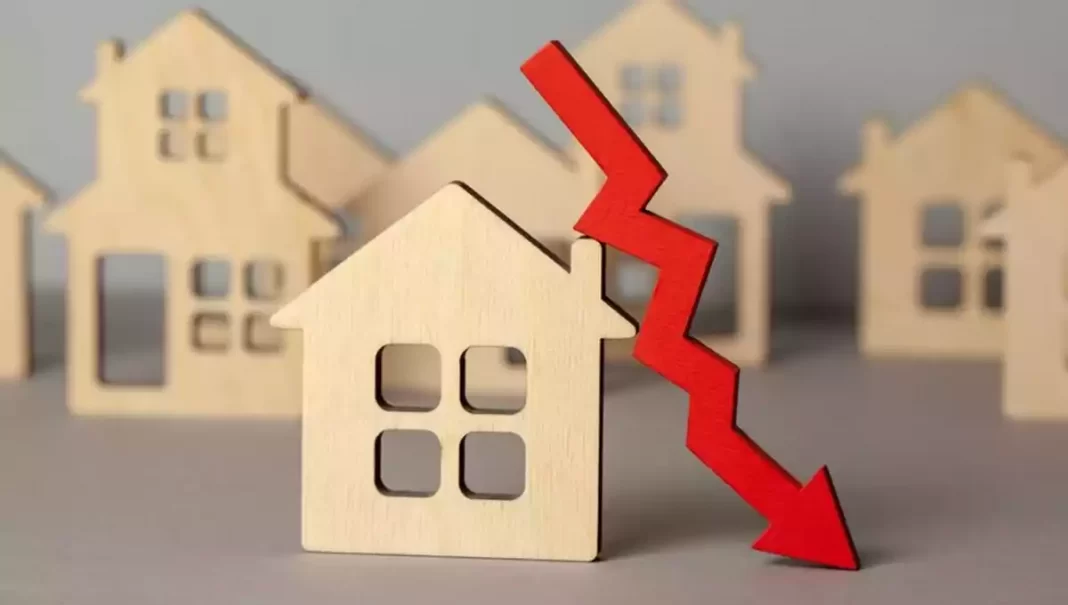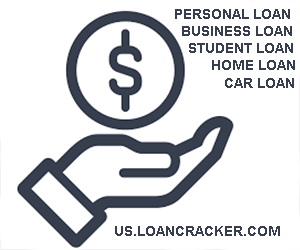SEO Meta Description: Learn about the ins and outs of 30 year mortgage rates, including how they work, what affects them, and how to get the best rates for your mortgage.
One of the most important decisions when it comes to buying a home is choosing the right mortgage rates. One of the most popular mortgage options is the 30-year fixed-rate mortgage. But what exactly are 30 year mortgage rates? How do they work, and what factors affect them? In this article, we’ll explore everything you need to know about 30 year mortgage rates.
What are 30 Year Mortgage Rates?
Definition of 30 Year Mortgage Rates: 30 year mortgage rates refer to the interest rate that a borrower pays on a 30-year fixed-rate mortgage loan, which determines the amount of interest paid over the life of the loan and affects the monthly mortgage payment.
Types of Mortgage Rates: There are various types of mortgage rates, including fixed-rate mortgages, adjustable-rate mortgages (ARMs), and interest-only mortgages. Fixed-rate mortgages have a set interest rate for the entire term of the loan, while ARMs have an interest rate that fluctuates based on market conditions. Interest-only mortgages allow borrowers to pay only the interest on the loan for a specified period, which may result in lower monthly payments but typically leads to higher overall costs. Other types of mortgage rates include balloon mortgages, jumbo mortgages, and government-backed mortgages, such as FHA and VA loans.
Top 5 Benefits of 30-Year Mortgage Rates Include:
- Lower monthly payments: A longer repayment term allows for smaller monthly payments, making it more affordable for many borrowers.
- Stability: With a fixed interest rate, borrowers can budget for consistent mortgage payments over the life of the loan.
- Predictability: The 30-year term is a long time, and locking in a fixed rate for the entire term can provide peace of mind and predictability.
- Flexibility: Lower monthly payments can free up cash flow and provide greater flexibility for other expenses or investments.
- Home affordability: Lower monthly payments and predictable interest rates can make home ownership more affordable and accessible for many borrowers.
How do 30 Year Mortgage Rates Work?
Understanding Amortization: Amortization refers to the process of paying off a loan through a series of regular payments, which typically include both principal and interest. With each payment, a portion of the payment goes toward the loan principal, reducing the overall amount owed, while the remaining portion goes toward interest charges. Over time, the proportion of the payment that goes toward principal increases, while the portion that goes toward interest decreases. This process continues until the loan is fully paid off. Amortization schedules are used to outline the breakdown of each loan payment, including the portion that goes toward principal and interest, as well as the remaining loan balance. Amortization is a common method of loan repayment for many types of loans, including mortgages, car loans, and personal loans.
How Payments are Applied to the Loan?: When a borrower makes a loan payment, the payment is generally first applied to any outstanding interest charges, with the remainder of the payment applied to the loan principal. As the borrower continues to make payments over time, the portion of each payment that goes toward the principal gradually increases, while the portion that goes toward interest gradually decreases. This process is known as amortization and is designed to ensure that the loan is paid off in full over the term of the loan. The specific allocation of payments between principal and interest may vary based on the terms of the loan and the lender’s policies. However, in general, a larger portion of each payment is applied to the principal as the loan balance decreases over time.
How Interest Rates Affect Your Payments?: Interest rates can have a significant impact on loan payments. When interest rates are low, borrowers can typically secure a lower interest rate, which can result in lower monthly payments. This can make borrowing more affordable and increase the borrower’s purchasing power. Conversely, when interest rates are high, borrowing costs increase, resulting in higher monthly payments. This can make it more difficult for some borrowers to qualify for loans or afford the payments on larger loans. Interest rates can also affect the overall cost of a loan, as borrowers will pay more in interest charges over the life of the loan if interest rates are higher. As a result, it is important for borrowers to consider interest rates when applying for loans and to shop around for the best rates available.
Top 4 Factors that Affect 30 Year Mortgage Rates:

- Economic Factors: inflation, economic growth, unemployment rates, the Federal Reserve’s monetary policy, housing market conditions, borrower credit scores, and loan-to-value ratios
- Credit Score and Financial History: Lenders typically offer lower rates to borrowers with higher credit scores and a history of responsible financial behavior. On the other hand, borrowers with lower credit scores or negative financial histories may receive higher interest rates, which can result in significantly higher total interest payments over the life of the loan.
- Loan Amount and Loan-to-Value (LTV) Ratio: Larger loans and higher LTV ratios generally result in higher interest rates, as these factors are associated with greater risk for the lender. Borrowers can often secure lower rates by making a larger down payment or choosing a smaller loan amount.
- Type of Property and Its Location: Lenders may offer higher rates for investment properties or homes in areas with less favorable market conditions or lower property values. In contrast, borrowers may be able to secure lower rates for primary residences or homes in more desirable locations with strong housing markets.
4 Golden Tips to Get the Best 30 Year Mortgage Rates?
- Improve Your Credit Score: make sure to pay bills on time, keep credit card balances low, and avoid applying for new credit too frequently. Review your credit reports for errors, and dispute any inaccuracies. Keep older credit accounts open, as a longer credit history can be beneficial.
- Shop Around for Rates: it’s essential to shop around and compare rates and terms from different lenders. Look beyond the interest rate and consider other factors like closing costs, points, and fees. Consider working with a mortgage broker who can help you navigate the process and find the best deal for your situation.
- Consider a Mortgage Broker: brokers have access to a wide range of lenders and loan products. A broker can help you navigate the mortgage process, compare rates and terms from multiple lenders, and find the best deal for your financial situation and goals.
- Consider Points or Fees: it’s important to consider points or fees associated with the loan. Points are upfront fees paid to the lender to lower the interest rate, while fees cover costs like loan processing and underwriting. Consider both factors when comparing rates and be sure to calculate the total cost of the loan over its entire term.
Pros and Cons of 30 Year Mortgage Rates:

- Advantages of 30 Year Mortgage Rates: The main advantages of 30-year mortgage rates are lower monthly payments and more time to pay off the loan. This can make homeownership more affordable, freeing up funds for other expenses. Additionally, the predictable payment schedule of a fixed-rate loan can provide stability and peace of mind to borrowers.
- Disadvantages of 30 Year Mortgage Rates: The main disadvantages of 30-year mortgage rates are higher total interest costs over the life of the loan and a longer time to build equity in the property. Borrowers may also find it harder to qualify for a loan with a longer term and may pay higher interest rates or fees as a result.
FAQs:
Q: What is the current average 30 year mortgage rate?
A: As of January 2023, the average 30 year mortgage rate is around 3.5%.
Q: How do I know if a 30 year mortgage rate is right for me?
A: A 30 year mortgage rate is a good option if you want a low monthly payment and a predictable payment schedule.
Q: How can I get the best 30 year mortgage rate?
A: To get the best 30 year mortgage rate, improve your credit score, shop around for rates, and consider using a mortgage broker.
Q: Can I refinance my 30 year mortgage?
A: Yes, you can refinance your 30 year mortgage if you want to get a lower interest rate or change the terms of your loan.
Conclusion:
30 year mortgage rates are a popular choice for home buyers who want a predictable payment schedule and a low monthly payment. Understanding how these rates work, what factors affect them, and how to get the best rates is essential for making informed decisions when it comes to purchasing a home. By taking the time to research and compare different mortgage options, you can make an informed decision that aligns with your financial goals and needs.
It’s important to remember that while a 30 year mortgage may offer lower monthly payments, it also means paying more interest over the life of the loan. It’s important to weigh the pros and cons and determine if a 30 year mortgage is the right option for you.
When shopping for 30 year mortgage rates, don’t forget to compare not only the interest rates but also the associated fees and closing costs. These can add up and significantly impact the overall cost of the loan.
In conclusion, understanding 30 year mortgage rates is an essential part of the home buying process. By educating yourself on how they work, what factors affect them, and how to get the best rates, you can make an informed decision that aligns with your financial goals and needs. Remember to do your research, compare options, and consult with professionals to ensure that you get the best possible mortgage rate for your home purchase.





